Product Range
Litz Wire
Litz Wire Types
| Type | |||||||
|---|---|---|---|---|---|---|---|
|
|
| Type | |||||||
|---|---|---|---|---|---|---|---|
|
|

Enamelled wire is a metallic conductor insulated with a varnish and generally used for electrical applications. Most times enamelled wire is wound in different shapes of coils to generate magnetic force for motors, transformers, magnets etc. Elektrisola produces over 30,000 different types of enamelled wire with the most important differences of characteristics as follows:
Copper is the standard used conductor material for enamelled wire with excellent conductivity and very good windability. For low weight and larger diameters, Aluminium sometimes can be used as a conductor material for enamelled wire. Because of the difficult contacting of Aluminium wire with problems of oxidation, Copper Clad Aluminium can help to compromise between Copper and Aluminium. For special applications a wide variety of conductor materials for enamelled wire is offered, such as Brass, Silver, Nickel, Gold, Stainless Steel, or alloys of copper for special characteristics like higher mechanical strength or bending performance. In addition, the core conductors can be plated with different materials such as Silver or Nickel.
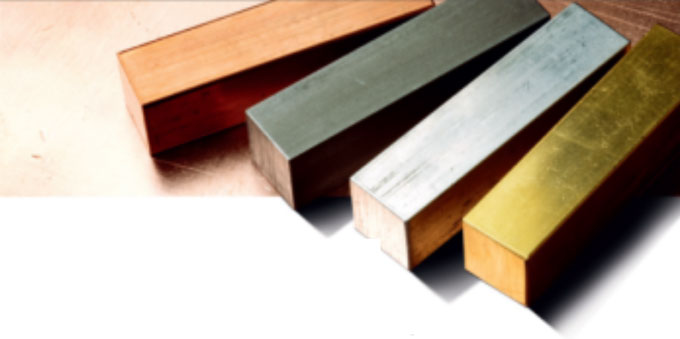
Elektrisola specializes in fine enamelled wire diameters, starting with 0.008 mm (8 microns), and going up to a diameter of 0.50 mm. Beside the standardized diameters a big variety of special diameters is produced according to customer’s specification. Bare wire tolerances are very important in enamelled wire as they have direct impact on the resistance what again determines the variance of the final coil resistance.
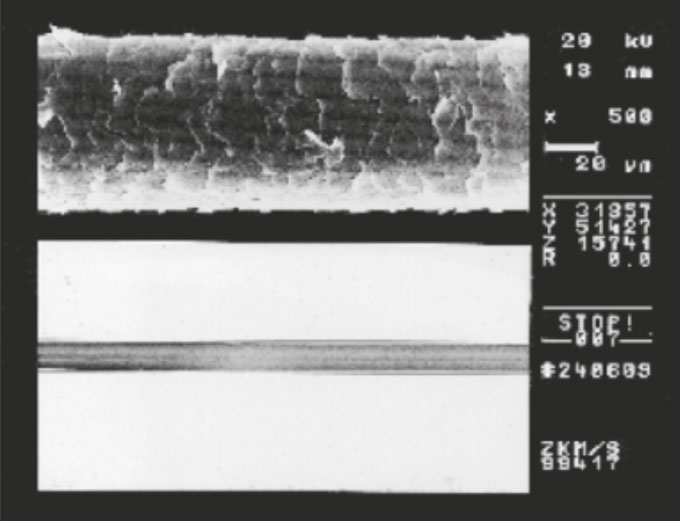
International standards like IEC group enamelled wires according to ranges of specific outer diameters. IEC standard for enamelled wire groups the insulation in Grade 1, 2, or 3, NEMA in single, heavy, or triple, and JIS in class 0, 1, 2, or 3. The tolerances in these enamelled wire standards can be further restricted if necessary to design and optimize the wound coils and final products.

In addition to the base coat insulations described separately, a selfbonding layer can be applied to the enamelled wire, by which the wire will be bonded together for example for bobbinless coils, such as voice coils.
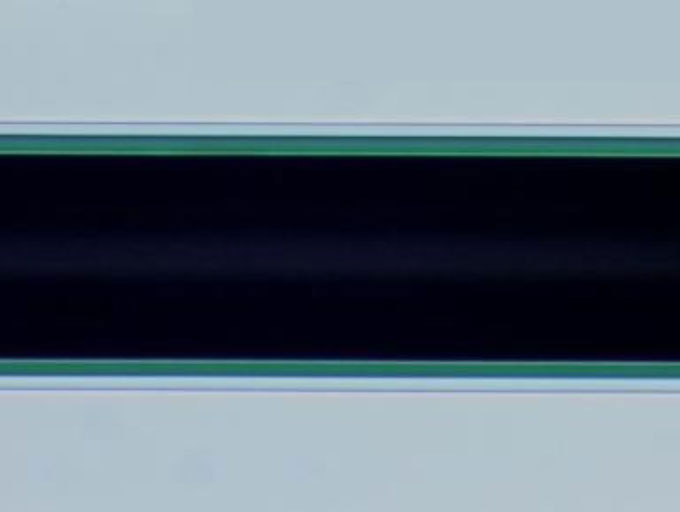
Spool types have to fit to the wire size. Finer enamelled wire sizes are wound on smaller spools, while for heavy sizes of enamelled wire, very large spools can be used. They are important for productivity as larger spools require less spool changes on the winding machines.
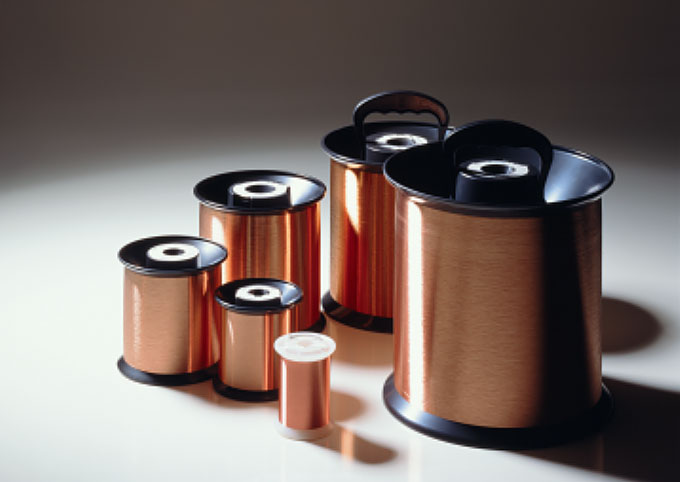
The wire length on one spool can be very long:
0.018 mm on spool 99L: up to 417 km of enamelled wire
0.05 mm on spool 199L: up to 1143 km of enamelled wire
0.30 mm on spool 400/630: up to 277 km of enamelled wire
Elektrisola offers a wide range of different insulations. Polyurethane has the advantage of easy direct contacting by soldering, while Polyester insulations are more resistant against higher temperatures. Thin top coats as Nylon or Polyamidimide may improve certain desired characteristics like mechanical or chemical strength of the enamelled wire.
Colors may be used to differentiate enamelled wire types or enamelled wire diameters, but have the disadvantage of lower technical properties and higher costs.
A defined very low amount of lubrication – mostly special types of paraffin – is applied to achieve excellent windability of the enamelled wire in all winding processes without wire breaks.
Elektrisola specializes in fine enamelled wire diameter and offers a wide range of products from 0.008 mm (8 microns) to 0.50 mm with many different enamel types on different conductor materials.
For copper: 0.008 mm – 0.50 mm
For other metals: Please inquire
Elektrisola produces enamelled wires according to many different specifications. The most important worldwide used specification is IEC, besides NEMA in North America and JIS in Asia.
Polyurethane
is a varnish which is easy for direct contacting by soldering, welding or crimping. Especially for fine enamelled wire the easy soldering is the most advantage of this enamel type. Polyurethanes are available with Temperature Index 155 °C (Polysol© 155) and Temperature Index of 180 °C (Polysol© 180). This enamel is available from 0.008 to 0.50 mm on all of our conductor materials.
Polyesterimides
are more resistant against higher temperatures and beside the pure Polyesterimide (Estersol© 180) not usable for direct soldering of enamelled wire. Under this enamel type also Theic-modified Polyesterimide (Amidester© 200) or (Amidester© 210) are listed.
Polyamidimides and Polyimides
have the highest temperature and chemical resistance and you will find them as I220-enamelled wire or ML240©-enamelled wire at ELEKTRISOLA product portfolio.
Based on the above mentioned enamel types, you can combine all these enamels with a self bonding coat such as Polyvinylbutyral, Polyamide or Polyester.
Selfbonding wire can be bonded by different methods
For copper wires an 8 mm copper rod (5/16″ in USA) is used as raw material, which is drawn through drawing dies to the required bare wire dimension in several stages. The copper rod has to be of high purity (copper content 99.99 %) and consistenly high quality to manufacture fine and ultrafine wires of sizes below 10 µm. ELEKTRISOLA uses only pure electrolytic copper ETP1 (copper content min. 99.99 %) from pre-approved high quality vendors.
The drawing process is carried out sequentially through several groups of machines producing specific diameter ranges. The wire is elongated in several stages through dies, so that the larger wire is permanently becoming thinner and longer during the drawing process while the volume by weight remains unchanged.
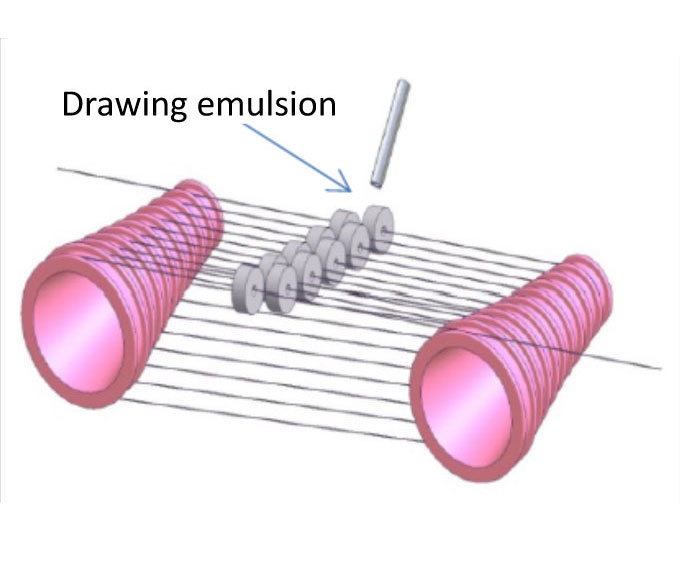
The quality of the copper, the fine tuning between the different drawing stages, and especially the quality of the drawing dies, are all of high importance to achieve a high quality final bare wire. The bearing surfxes of the wire drawing dies consist of natural or artificial diamonds or, for heavy wire production, of carbide.

All enamelled wires are enamelled on special enamelling machines which are developed and produced by ELEKTRISOLA for our exclusive use. Enamelling of enamelled wire is a continuous process, mainly consisting of the annealing process, enamel application, curing process, lubricant application, tension control and spooling.
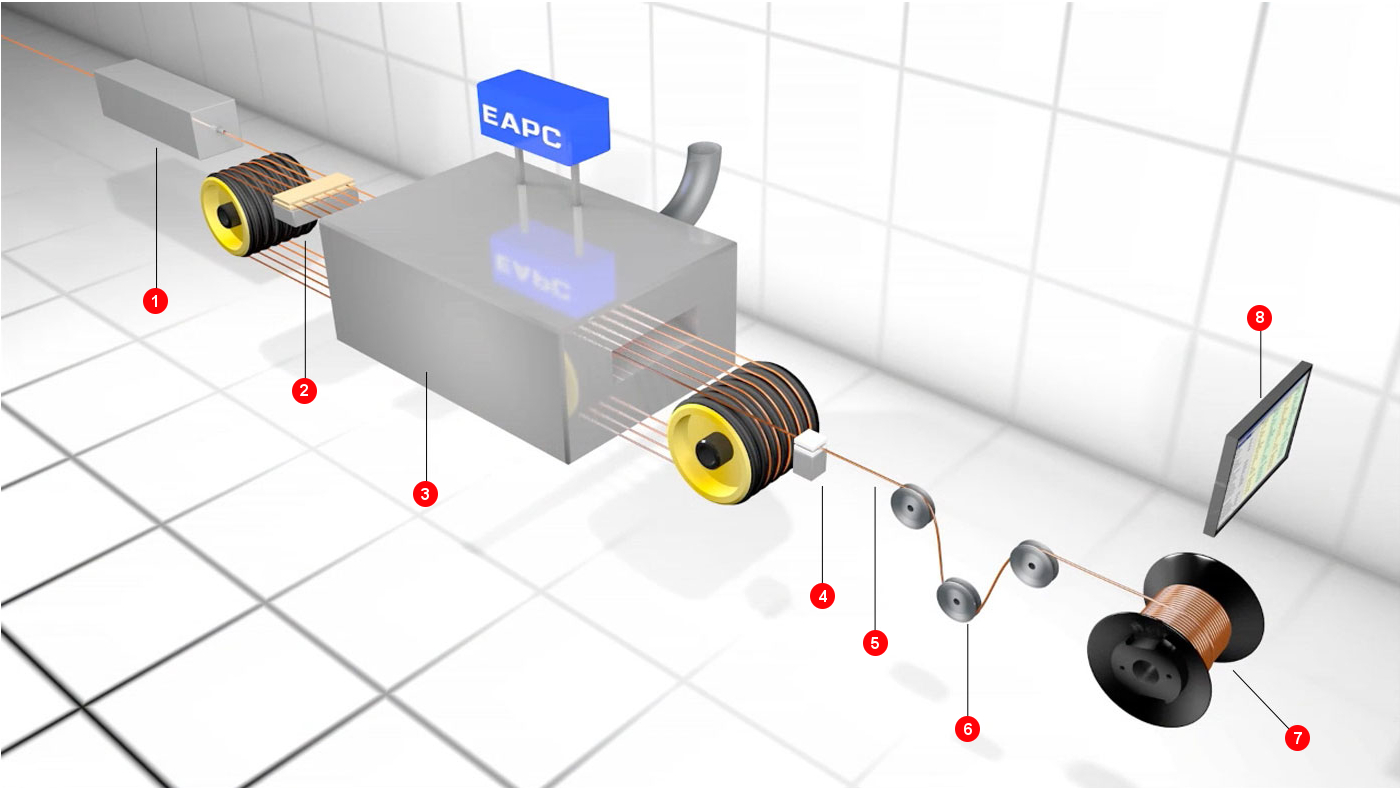
1. Annealing Process
During the drawing process the bare wire’s grain structure has been changed through cold deformation. Annealing will re-crystalize the copper and make it soft again. This thermal stress relief process is carried out under protective atmosphere in order to avoid oxidizing the wire surface, which would interfere with good adherence of the initial coating of insulation later in the process. Softness of the enamelled wire is an important criteria for good windability, in particular significantly reducing the number of wire breaks.
2. Enamel Application
There are 2 main application systems for enamelling of winding enamelled wires, i.e felt application and die application, whereas felt application is mainly used in fine Enamelled wire production, while die application is mainly used in heavy enamelled wire production. The enamel coating should always be applied in as many single layers as possible rather than fewer and thicker layers to achieve better mechanical and electrical properties of the enamelled wire.
3. Curing Oven
Solvents contained in the liquid enamel are driven out in the curing oven at high Temperature and then are burnt catalytically by using the thermal energy in an environmentally friendly way. Temperature control is very important: if the temperature is too low, too many solvent residues will be left in the enamel layer, leading to poor adhesion and reduced mechanical and electrical properties of the enamelled wire. If the temperature is too high, the enamel coating will be hard and brittle, leading to cracks in the insulation coating of the Enamelled wire resulting from mechanical stress.
4. Lubrication
A defined amount of lubricant is precisely applied to the insulated enamelled wires surface. Lubrication is necessary to achieve consistent winding properties and failure-free winding of the wire even at high winding speeds.
5. Diameter Control
ELEKTRISOLA continuously monitors the Outer Diameter of all enamelled wires after the final pass by laser.
6. Tension Control
A continuous wire tension control during the enamelling process results in a consistently uniform spooling onto the spool. With effective tension control, elongation of the enamelled wire is avoided and thus a change in resistance. Furthermore, good de-reeling properties of enamelled wire for customer can be guaranteed.
7. Spooling
The wire pitch and the spool’s rotational speed are spooling process variables closely to be controlled. This results in consistently good enamelled wire de-reeling performance and minimizes other problems like trapped and tangled wires.
8. Monitor
The monitor informs the operator about all important parameters of the process.
There are different enamels available worldwide at Elektrisola. In addition, there are a few types available in selected continents.
The most important technical data of enamelled copper wire are controlled by the resistance and outer diameter of the Enamelled wire. These and other values are important as engineering support. Different standards specify these values differently, therefore the three major world standards for Enamelled wire are shown by size. IEC (International Electrical Commission) is the harmonized worldwide basic standard. NEMA and JIS still maintain additional elements of their older standards into their national standard.
For our self bonding wires there are typical enamel types available for the different markets, depending on the different standards and also on different main applications for the markets.
The most important technical data of enamelled copper wire are controlled by the resistance and outer diameter of the Enamelled wire. These and other values are important as engineering suport. Different standards specify these values differently, therefore the three major world standards for Enamelled wire are shown by size. IEC (International Electrical Commission) is the harmonized worldwide basic standard. NEMA and JIS still maintain additional elements of their older standards into their national standard.

For most of the Enamelled wire applications copper is used as conductor material but for special applications like voice coils, actuator coils, or other special applications high performance metals are needed.
ELEKTRISOLA has a wide range of special conductor material for Enamelled wire, like low weight, high mechanical or bending performance metal. In addition, plated conductors are available which show superb characteristics for special applications.
Please contact us for metals not shown in the table.
For most commonly used metals:
For detailed information of each metal group:

FIW (Fully Insulated Wire) is an alternative wire to build switching transformers typically using TIW (Triple Insulated Wires). Due to the big choice of overall diameters it allows to produce smaller transformers at lower costs. At the same time FIW has better windability and solderability compared to TIW.
FIW is produced in a multiple coating process, which guarantees insulation without any defects.
ELEKTRISOLA FIW is approved as MW85C and according to OBJT2. It has been sold successfully for several years to the automotive industry and for applications which do not require UL approval acc. to UL 60950. As Elektrisola FIW is approved as MW85C it can be used by many Insulation Systems according to UL 1446. The Safety Standard IEC 62368-1 Edition 3 is approved and allows the use of FIW. The old Safety Standard IEC 60950 was withdrawn end of 2020.
Elektrisola developed a product based on a modified polyurethane with a life time acc. to IEC 60172 of 20,000 h at 180 °C, short designation P180. It is produced with multiple passes of individual covering of insulation and is in-line tested for high-voltage-continuity to assure the perfect insulation without any insulation defects.
FIW is defined with many Grades specifying different insulation thicknesses. FIW 3 is the smallest defined build, while FIW 9 is the biggest.
Elektrisola Standard FIW Grades ex stock are FIW 4 and FIW 6, as they give a good compromise between good technical performance and affordable costs.
FIW is specified in different specifications. Basically there are Standards for enamelled wires, such as IEC and NEMA, but there are also Safety Standards, such as the old IEC 60950, replaced by IEC 62368-1, and UL Safety Standards, such as UL 2353.
In addition, some values are also specified in product standards as the Transformer Standard acc. IEC 61558-1.
Product
IEC 60317-56 and 60317-0-7
NEMA MW85c
UL 2353
Test Conditions
IEC 60851
IEC UL 60950 Annex U
IEC 61558-1
IEC 61558-2-16
UL 2353
high temperature class of 180 °C, thermal life time acc. UL 60950 Annex U tested in transformers for temperature class 155 °C/130 °C
proven insulation system acc. UL 1446 of enamelled wires also with UL, used over many years

The basic production process is similar to a normal enamelled wire  Production Process, but has many more single wire passes - up to 120 - to generate the finally very thick enamel layer, as shown in below photo, where always 3 alternate layers were coloured to demonstrate the big number of layers.
Production Process, but has many more single wire passes - up to 120 - to generate the finally very thick enamel layer, as shown in below photo, where always 3 alternate layers were coloured to demonstrate the big number of layers.
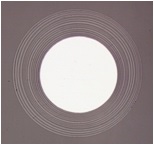
In addition, every production line is equipped with an In-Line High Voltage Continuity Tester, which checks the insulation of the wire over the complete length permanently to guarantee that there is no insulation fault.
The FIW wire is spooled on standard spools used in Europe and in Asia
Many FIW wire configurations can be supplied ex stock. In the table  Dimensions the grey highlighted diameters and builds are typical stock items.
Dimensions the grey highlighted diameters and builds are typical stock items.
IEC 60317-56 describes a full Enamelled Wire Specification with mechanical, electrical, thermal and other characteristics like soldering
UL 2353, rather similar to IEC 60950 Annex U, gives mainly electrical properties which mostly are rather short-term tests
The new Safety Standard IEC 62368-1 continues with the same requirements, taken partly from the Transformer Standard IEC 61558-1 for FIW.
Breakdown Voltage (BDV) values for FIW will vary depending upon which standard is used to calculate these values.
When using the enamelled wire standards for FIW (IEC 60317-0-7 and 60317-56) the BDV is calculated using the minimum insulation increase per size, (min. insulation increase = min. OD including insulation – nominal bare wire dimension).
 BDV calculation acc. IEC 60317-0-7
BDV calculation acc. IEC 60317-0-7
The minimum values can be found in IEC 60317-56
 Minimum BDV acc. to IEC 60317-56
Minimum BDV acc. to IEC 60317-56
The Transfomer Standard IEC 61558-2-16 was finally corrected as the BDV calculation in the old version mistakenly used the minimum insulation increase divided in half, erroneously resulting in approximately half the BDV values as the magnet wire standards.
IEC 61558-1 as a new version of IEC 61558-2-16 has already been released, correcting errors (like the BDV calculation described above) found in the previous version. One major difference: The new version requires the FIW to maintain durability for dielectric strength for one minute at 180 °C with a factor of 0.85 compared to IEC 60317-0-7. Here the dielectric strength is measured by Breakdown Voltage (rms) at room temperature.
 Minimum BDV acc. to IEC 61558-1
Minimum BDV acc. to IEC 61558-1
IEC 62368 follows the BDV values of IEC 61558, but does not specify 180 °C as test temperature as IEC 61558
The minimum breakdown voltage acc. to IEC 60317-0-7 can be calculated with the nominal diameter and the FIW Grade by tool
Dimensions of FIW depend on the Insulation Grade, which describes the amount of insulation on the bare wire
Voltage or necessary FIW Grade by diameter for a given voltage can be calculated by a calculator
Due to the extraordinary thickness of the insulation of FIW the length of a certain quantity of FIW and the weight of a wire with a certain length deviate remarkably from experiences with normal enamelled copper wire.
The length of 1 kg of FIW 3 - FIW 9 for nominal diameters in the range of 0,071 - 0,710 mm - assuming nominal outer diameters acc. to IEC 60317-56 - can be looked up in the  FIW Length Table on the next page in km/kg.
FIW Length Table on the next page in km/kg.
The weight of 1 km of FIW 3 - FIW 9 for the same range of nominal diameters - with nominal outer diameters acc. to IEC 60317-56 as before - can be looked up in the
The weight or length of a specific FIW wire can be checked by a calculator
FIW is approved for different classifications:
UL for MW85C, UL File OBMW2.E331840
UL for OBJT2, UL File OBJT2.E316900
VDE Certificate Number 40036030
IEC 62368-1 as new Safety Standard, replacing IEC 60950
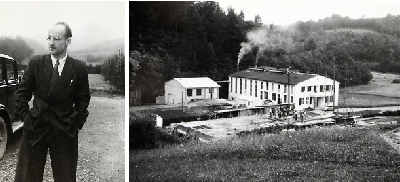
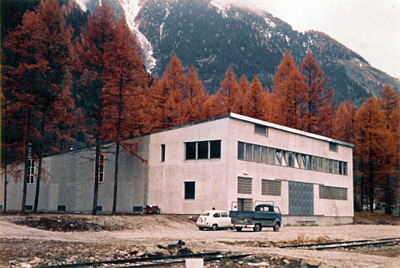
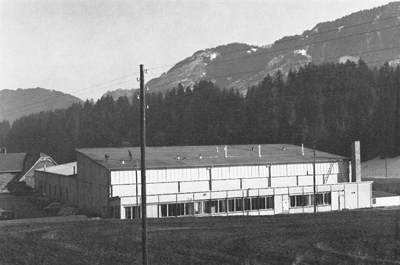
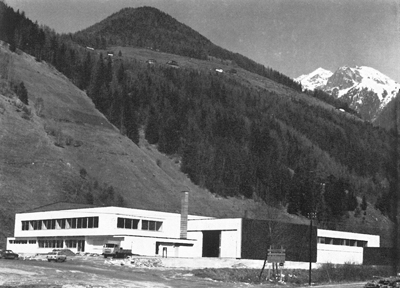

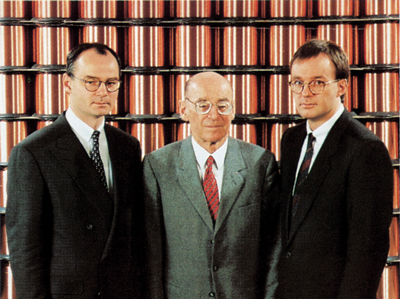
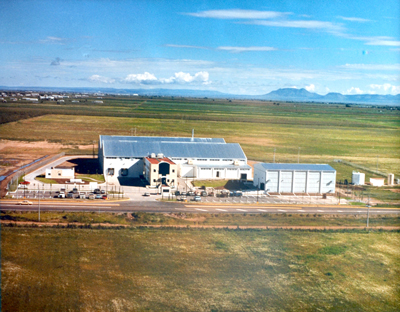
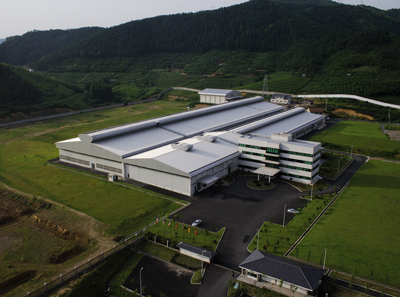
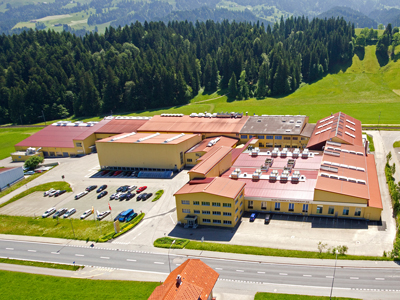
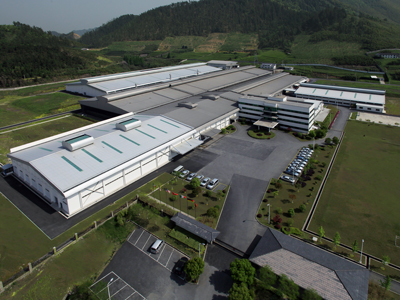

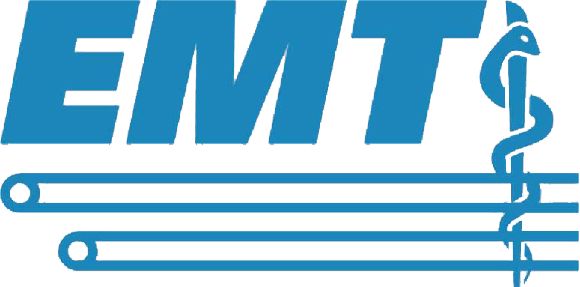

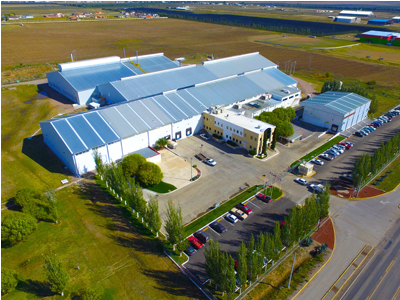
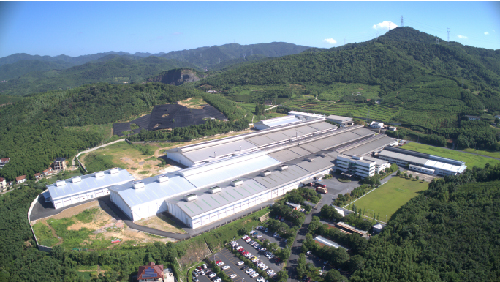

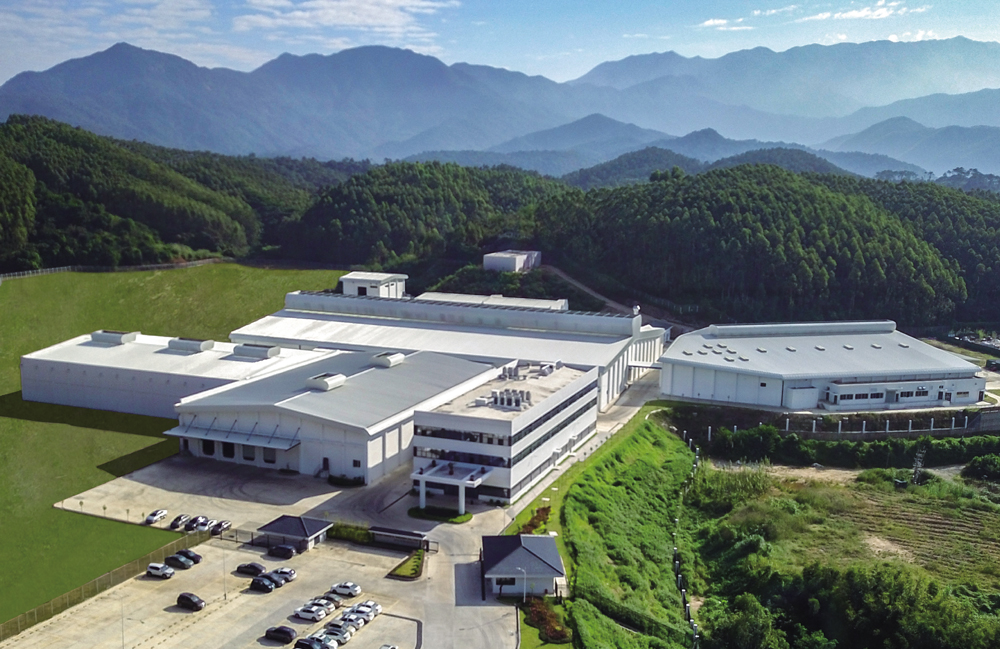
|
|||||||||||||||||||||||||
|
|||||||||||||||||||||||||
|
|||||||||||||||||||||||||
|
|||||||||||||||||||||||||
|
|||||||||||||||||||||||||
|
|||||||||||||||||||||||||
|
|||||||||||||||||||||||||
|
|||||||||||||||||||||||||
|
|||||||||||||||||||||||||
|
|||||||||||||||||||||||||
|
|||||||||||||||||||||||||
|
|||||||||||||||||||||||||||||||
|
|||||||||||||||||||||||||||||||
|
|||||||||||||||||||||||||||||||
|
||||||||||||||||||
|
||||||||||||||||||